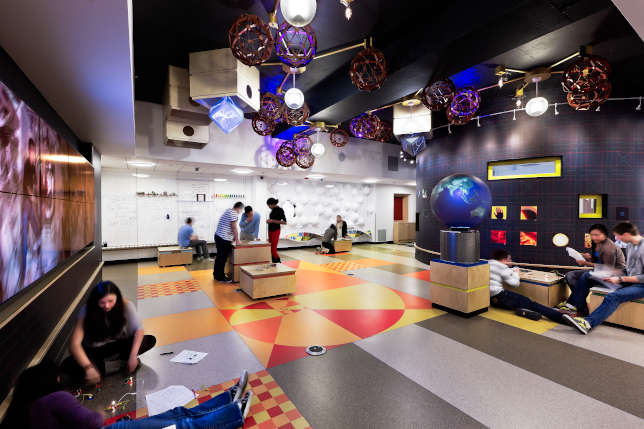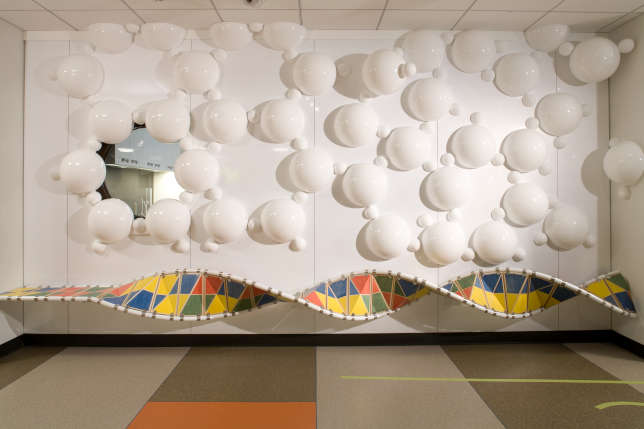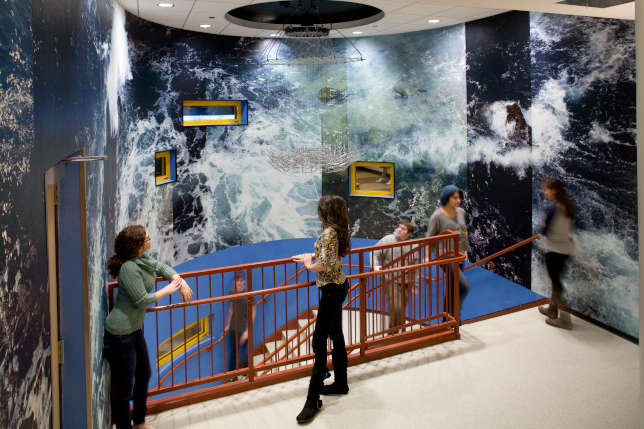Immersive Learning Environments: An Untapped Resource for Differentiated Learning
As education principles continue to evolve, immersive learning environments offer an emerging and meaningful education tool.
The Information Age has a habit of co-opting language associated with established disciplines for digital technology innovations. The word architecture now refers as often to digital hardware constructions as it does to buildings. Immersive learning environments are now understood in a virtual sense so predominantly that they have a commonly recognized abbreviation — ILEs. Similar to “architecture,” there is another, non-virtual way to understand immersive learning environments, a way that offers an untapped resource for differentiated learning goals and objectives.
Many of us first experienced immersive learning environments when we walked into our first school classroom. This was the domain of the teacher who had an intuitive understanding of the value of an immersive learning environment and took the liberty of filling the blank canvas of classroom walls and shelves with age-appropriate illustrations, models and photographs — even the occasional class pet — to engage students in a broad range of educational subjects. This approach to classroom environments became so common, so expected that it seems to have eluded the interest of rigorous academic study that might prove or disprove its value.
Virtual Versus Physical Immersive Learning Environments
Today’s most commonly understood forms of immersive learning environments are virtual, designed to mimic realistic situations for training purposes. The underlying philosophy of ILEs is that virtual immersive environments offer a safe, efficient and inclusive way for individuals to learn and apply new skills that can then be applied in the real world.

The increasing prevalence and feasibility of virtual immersive learning environments has given rise to studies that did not exist before about the value of immersion to education. One study described the aim of learning as becoming so genuinely and totally absorbed in an activity that time is perceived to pass very fast. Such an immersive cognitive state has been shown to be very effective for learning.
This kind of total immersion may be possible virtually, but it is not feasible in a school. Even if it were, it could not address some important educational principles nearly as well as an actual physical environment. For example, a school is a place for student and educator collaborations that are essential to differentiated learning strategies. Just as new digital technologies have led to the co-option of traditional understandings from other disciplines, so do the evolution of virtual immersive learning environments offer something for consideration in the design of actual school environments.
Another tenet of differentiated learning is that learning happens outside of the classroom. Traditionally, the design of common school areas has prioritized durability and maintenance over education-friendly environments. This is changing as learning strategies evolve and some creative common school environments are being built. But aside from the occasional school library, there has been little in the way of truly immersive learning environments outside the classroom.
A Space for Science
One successful example that may be a model for others is a recently designed science center for middle school students. The school recognized that about a quarter of its middle school students had an aptitude for and innate interest in science, that another quarter of its students might not ever, and that the remaining 50 percent might if they were more naturally engaged by the subject. The school’s leadership and faculty understood this as an unmet challenge that reputation demanded be corrected.

Finding a solution began by deconstructing the existing science curriculum, which ran from the biological sciences through physics. Considering science curriculum sequencing from a student’s point of view, faculty began to see physics as a more logical building block toward other sciences and decided to flip the sequencing. This fundamental shift in thinking unlocked other creative thinking about science education, particularly with respect to educational environments.
Science classrooms themselves were reexamined and restructured to include zones for collaboration and individual experimentation that fostered differentiated learning. But it was the common areas between science classrooms that were fundamentally reconsidered to form a new science center that became the heart of the science curriculum.
The school’s science center is an immersive learning environment in the spirit of traditional elementary school classrooms, but more mature and communal in nature. It is rooted in serious science concepts but has a playful character, uncharacteristic of traditional science learning environments, that naturally engages that middle 50 percent of students who are open to but not effectively engaged in science education.

Differentiated Learning
The science center is a model differentiated learning environment. It is divided programmatically into areas that address a broad range of science topics. From the student’s perspective, the variety of interactive activities appears almost random, which fosters individual curiosity and allows students to find a learning path natural to them. From the faculty’s perspective, the apparent variety has been carefully curated to reinforce curriculum goals.
Differentiated learning has required a new degree of collaboration among teachers to address the broad bandwidth of student learning paths. The results to date have been mostly limited to the classroom or to one entire grade level. Creating immersive learning environments outside the classroom raises the bar on faculty collaboration for several reasons. One is that these environments cut across grade levels and so must be relevant to a broader student, faculty and, perhaps, parent audience. Another is that they tend to be more permanent in nature and so the content of these environments must be carefully curated to address enduring educational goals.
Common Areas
Perhaps the biggest challenge to implementing common area immersive learning environments is the consensus building it requires among faculty and administration. Classroom immersive learning environments are commonplace because they are within the control of a single teacher. Common area immersive learning environments require a shared view among educators about curriculum, content and, ultimately, design. Consensus of this sort is hard-won, and any compromises made in the planning stages for the sake of consensus have a way of showing through in the executed design. This challenge is probably why common area immersive environments to date have tended toward school boosterism and the temporary display of student work.

What common areas lend themselves to immersive learning environments? Like the middle school science center, common areas between classrooms dedicated to a specific subject lend themselves to immersive content development. Stairways offer good opportunity because they are dynamic, well used by students and dedicated to single function that will not change over time. Spaces that are multifunctional do not because it is hard to develop immersive content for changing environments.
Science and math education may more easily lend itself to the consensus-building required of immersive learning environments because it deals with content that is by nature objective and enduring. The current emphasis on science and math education as a key to our collective future can be seen to reinforce the prioritization of these types of immersive learning environments. And just as STEM led to STEAM, it is also easy to envision complementary arts-related immersive learning environments.
A residual but important benefit of investing whatever effort may be required to realize common area immersive learning environments is the example they offer to students. These environments ‘look like them’ in the sense that they are accessible in ways not previously imagined. And their creation requires the same curiosity, collaboration and rigor that we have committed to teaching them. As education principles continue to evolve, immersive learning environments offer an emerging and meaningful education tool.